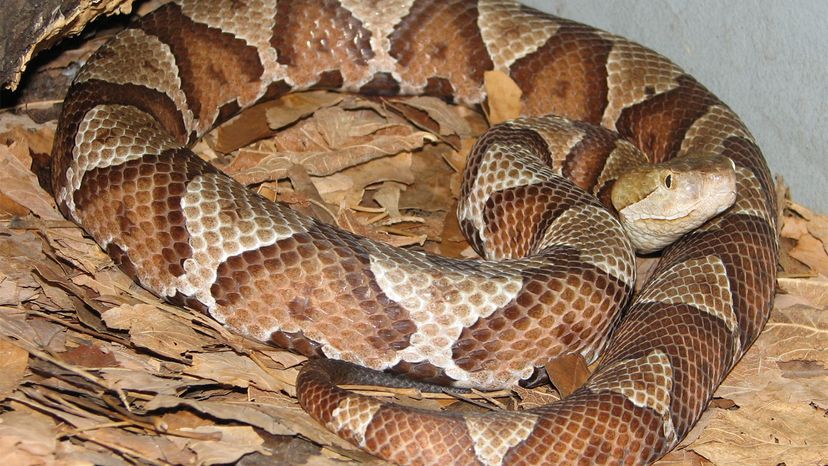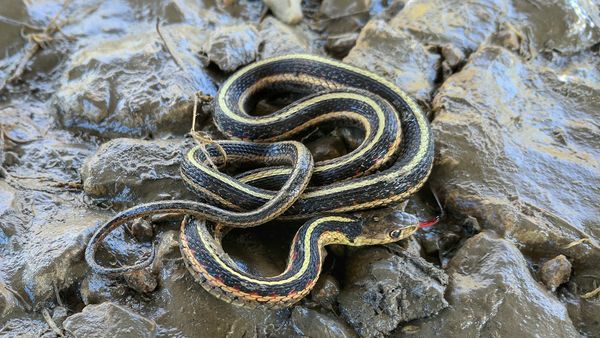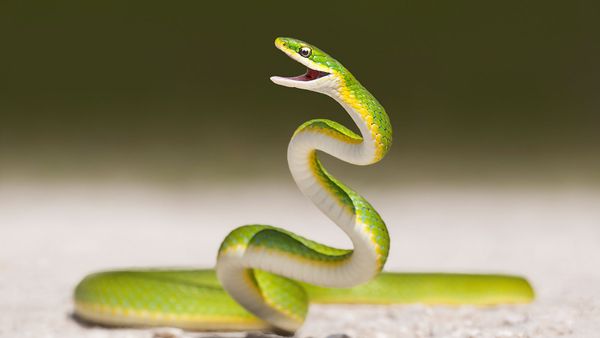Jeff Beane, a herpetologist at the North Carolina Museum of Natural Sciences, says in an email interview that copperheads are not aggressive, and will only bite if they feel threatened or are frightened, such as when someone accidentally steps on or near them. "They don't go around attacking people," he explains. "They defend themselves."
Copperheads (Agkistron contortrix) get their name from their copper-colored heads. Although several snake species are colloquially called "copperheads," Agkistron contortrix is the only true copperhead in North America.They thrive in a variety of habitats, including wooded areas, mountains, along streams and rivers, abandoned farm buildings, and in desert canyons and sawdust piles. "They mostly like wooded areas with some kind of cover, and also along the edges of woods and openings," Beane says.
The copperhead, like the rattlesnake and cottonmouth, is a so-called "pit viper." They have a heat-sensitive pit organ on each side of its head, between the eyes and nostril. The copperhead uses its pit organ to detect its dinner at night. Once they bite, the copperhead's fangs release a venom that breaks down red blood cells. "The venom is a mixture of proteins and enzymes," Beane says, adding that the copperhead feeds mostly on small mammals, such as mice and shrews. They will also chow down on large insects, including the cicada and meaty caterpillars. When attacking a larger mammal, the copperhead will bite and then allow time for the venom to do its dirty work. The snake will then slither behind, tracking its prey and attacking when it is too weak to fight back.
While other snakes might seem to be loners, copperheads are very social. They hibernate during the winter with other copperheads and other species. When the spring mating arrives, the males turn overly aggressive and will try to overpower their rivals, generally in front of the female. Those who lose the battle are, for all intents and purposes, emasculated, and will never challenge another male.
Males seek out females with their tongues, which can detect pheromones emitted by the female. Once the male has found its mate and vanquished his rival, he works hard to stimulate her. This courtship could last an hour or more until the female is ready to receive him. How does the male know when the female is stimulated? She lifts and arches her back. Males also emit a pheromone that makes the female less desirable to other males.
As far as the female is concerned, reproduction can take several forms. While the male can fertilize her eggs, the female can also give birth asexually, through the process of parthenogenesis that doesn't require fertilization. Some vertebrates, like snakes, are notorious for this. Females can also store sperm. Regardless of how they become pregnant, the eggs develop inside the female's body, where they hatch. Once the child is born, the female slithers away and does not care for her children.



